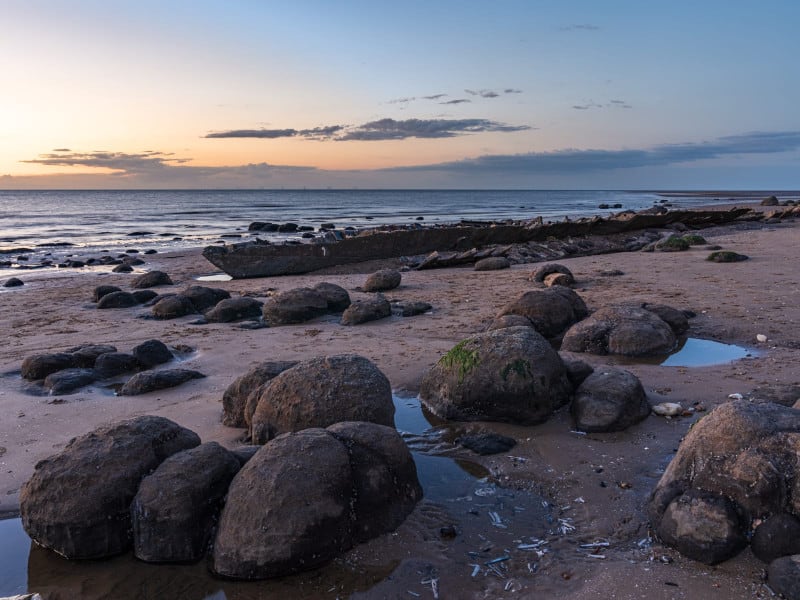5 curiosities to discover on your Norfolk stay at Heacham Manor
Think you know Norfolk? Here are five wonders you might be surprised to learn about and visit in our glorious county…
Looking for the best places to visit during your stay in Norfolk? Brush up on the Norfolk dialect or the locals may confuse you when directing you to Stew-key, Cly, Hazebro, Hunston and Windum (that’s Stiffkey, Cley, Happisburgh, Hunstanton and Wymondham). Quite rightly, Norfolk natives are proud of their regional accent and the Friends of Norfolk Dialect, F.O.N.D for short, is a great starting point if you’re interested in learning about the local lingo. There are also some curious words and phrases that might stump you, unless you’re in the know – bushy barney bee is a ladybird, while a teetermatorter is a see-saw. If someone says something is, ‘On the huh’, they’re telling you it’s wonky, or that, ‘It crazes me’, they’re feeling rather annoyed. Learn the local lexicon and you’ll be sure to impress the bors (neighbours!).
Norfolk has strong military links, from Burnham Thorpe local boy and Royal Navy hero Horatio Nelson to fictional favourite Dad’s Army which, although set in the fictional town of Wilmington-on-Sea, was actually filmed in Thetford, where today you will discover the Dad’s Army Museum.
If you are interested in the region’s connection to the allied forces, the annual Holt & Sheringham 1940s Weekend, which this year takes place on 16-17 September, is an unmissable event when the towns celebrate the resilience of those who lived through World War II. Ride the steam railway, catch a vintage bus and tour the military vehicles on show as the whole town gets into the spirit of things and dresses up in period costume.
Get up close with history nearby Heacham Manor at St Edmund’s Point in Old Hunstanton, where you can spot the bottom of the hull of the Steam Trawler Sheraton at low tide. Originally a fishing vessel built in 1907, it was later used for boom defence during World War I and as a patrol vessel in World War II, but during a gale on 23 April 1947 the ship broke free and drifted onto the beach.
Further along the coast at Titchwell Beach, along with the RSPB nature reserve you can spot the remains of two Covenanter A13 Mark III/Cruiser Mark V tanks which were used during exercises by the Royal Tank Regiment between 1942-1945. Hidden in the sand, the military vehicles were first exposed in 1991 and can often be spotted at low tide – to find the site, turn right off the beach boardwalk towards Brancaster.
Norfolk has plenty of historic houses to explore, and several of these stately homes have a few surprises to discover! The Holkham Estate is an incredible place that you could spend days exploring, but if you take a walk in the parkland you’ll come across a curious thatched building – one of the oldest on the estate, the ice house kept the hall furnished with blocks in the days before refrigeration. Back in the 18th century, ice would be cut from the nearby lake and stored underground to furnish the kitchens. The traditional method was used until Holkham Hall was electrified in 1912.
Venture towards the east of the coastline and, located between Cromer and Aylsham, the Blickling Estate is best known as the birthplace of Anne Boleyn, the second of Henry VIII’s wives. This Jacobean stately home offers a fantastic day trip and don’t miss The Blickling Pyramid, located next to the woods, a mausoleum built in the 1790s for John Hobart, 2nd Earl of Buckinghamshire, and his two wives. Constructed in porous limestone, the pyramid mysteriously turns black when it rains – spot the memorial stone on the back of the building and the bull, the family’s emblem, on top!
We’ve already mentioned the Dad’s Army Museum, but Norfolk has no end of curious museums in all shapes and sizes. Langham Dome looks like a miniature planetarium, but the concrete structure played an important part in World War II when it was used to train anti-aircraft gunners – painted white inside, a screen projected films of moving aircraft which trainees has to ‘shoot’ at to perfect their aim. Open 10am – 4pm, Wednesday to Sunday, visit to learn more about the site’s history.
Meanwhile, The Shell Museum in Glandford, near Holt, is Norfolk’s oldest museum and houses – you guessed it – an incredible collection of seashells, along with fossils, archaeological finds and birds’ eggs. The museum is open 10am – 3pm, Tuesday to Saturday.
From the world’s smallest, to a track where dogs can ride along too, we have some terrific train journeys to experience while you’re in Norfolk.
Perhaps most famous is The Poppy Line, which runs along the north Norfolk coast from Sheringham to Holt – nothing beats the sea view from the steam locomotive as it hurtles along the track, and the railway organises a number of themed events throughout the year, so book ahead for a great day out.
Slightly further along the coast the Bure Valley Railway runs from Aylsham to Wroxham and is Norfolk’s longest narrow gauge steam railway at nine miles each way. With a combination of steam and diesel locomotives, it’s great fun for all ages and pooches can ride for £3.50 (assistance dogs travel for free).
Finally, it may be the world’s smallest public railway, but the Wells & Walsingham Light Railway which rides from the seaside town to the historic abbey, is no less epic. The 30-minute ride travels over and under bridges, past a hill fort and through a ghost platform in idyllic countryside.





